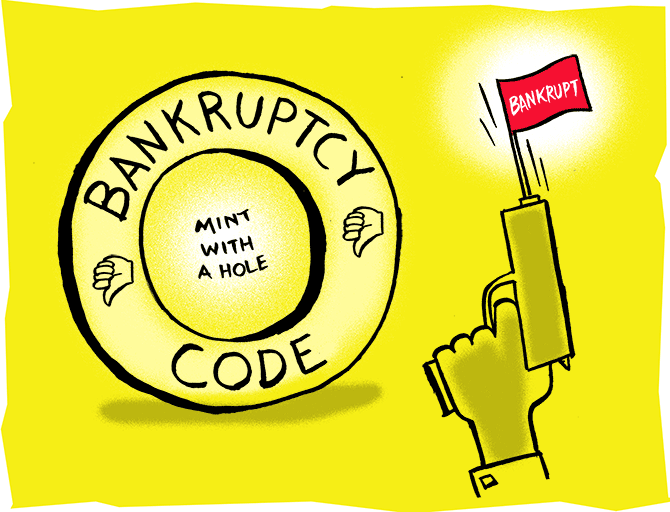Bankers say debt resolution bills are coming high as resolution professionals are giving the human resources and audit/legal consulting to outside firms to plug all the loopholes.

The rising costs of debt resolution process of several bankrupt companies are worrying bankers, as a substantial part of company’s income is going to pay the resolution professionals and other consultants.
Bankers say debt resolution bills are coming high as resolution professionals are giving the human resources and audit/legal consulting to outside firms to plug all the loopholes.
Bankrupt companies also pay for special forensic audits and legal opinions that are conducted where the banks doubt that funds have been diverted by the previous promoters.
As a result, it’s the creditors and former employees who have to wait longer to get their dues.
According to the IBC 2016, once a company is sent to the National Company Law Tribunal (NCLT) for debt resolution, a resolution professional is appointed to run the company and find a new buyer while the former promoters of the company and its board is sacked.
The company’s income is then used to pay the debt resolution costs.
“It’s advantage big audit firms that are getting all the contracts. Extensive litigation by previous promoters and other operational creditors just adds to the final bill,” said a source close to the development.
“As litigation drags on for years, the company, which is going through the debt resolution process, is paying all the bills, including the costs of legal opinions,” he said.
“The net result is huge losses to the bankrupt companies, job losses, and lower recovery of dues by the lenders,” the official said.
Citing an example, the official said Aircel’s debt resolution process cost the company around Rs 320 crore for RP process and wages.
Similarly, Videocon, which is under debt resolution process since 2017-end, is paying close to Rs 10 crore a year to the resolution process alone.
"As several of the debt resolution companies are under litigation and there is no clarity on closure, the bills of the RPs just keep rising and are paid on priority basis,” he said.
Meanwhile, banks are letting go of their notional interest income.
According to the IBBI, since the provisions of corporate insolvency process came into effect from December 1, 2016, around 3,774 CIRPs have commenced up to March-end this year.
Of these, 312 have been closed on appeal or settled, and another 157 have been withdrawn.
Around 914 have ended in orders for liquidation and 221 have ended in approval of resolution plans.
The banks are recovering on an average 45 per cent of their dues from the bankrupt companies.
Though the bankruptcy law aims to close the various processes at the earliest and has prescribed timelines, the litigation has delayed the resolution.
For example, the 221 CIRPs, which have yielded resolution plans till March, 2020, took on average 375 days (after excluding the time excluded by the appellate authority) for conclusion of process.
Similarly, the 914 CIRPs, which ended up in orders for liquidation, took on average 309 days for conclusion, as per the IBBI. But including the litigation time, the average time taken goes up substantially.